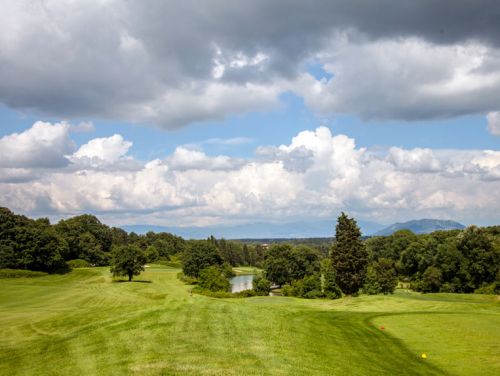The Slideshow of Luxovis and World Class Luxury
Scroll Position Contacts
The Contacts of the luxury item
Contacts
|
Golf & Sport
|
||

|
Royal Park I Roveri Golf Club
Type: Golf Location: 10070, Fiano, , Italy Address: Rotta Cerbiatta 24 |
|
|
Golf & Sport
|

|
|
Royal Park I Roveri Golf Club
Type: Golf Location: 10070 Fiano Address: Rotta Cerbiatta 24 |
Scroll Position Overview
Overview of the luxury item
Overview
Born in Ince-in-Makerfield, England, Robert Trent Jones accompanied his parents to the United States at the age of five. The family settled in East Rochester, New York where young Robert took a job becoming the first golf professional at Sodus Bay Heights Golf Club which is located in the Sodus Point, NY area. He became an avid and skilled golfer as a youth, but health problems prevented him from joining tournament competition.
Jones attended Cornell University, but did not graduate as he did not meet the entrance requirements. However he was allowed to design his own course of study to become a professional golf course designer, taking courses in landscape architecture, agronomy, horticulture, hydraulics, surveying, public speaking, and economics. During his studies at Cornell he designed the back nine of Cornell's Robert Trent Jones Golf Course, which opened in 1941. Jones returned in 1954 to complete the front nine. At Cornell, he was a member of Delta Kappa Epsilon fraternity.
The golf course at Green Lakes State Park in upstate New York was designed by Robert Trent Jones and opened in 1936.
After receiving his college degree, Jones formed a partnership with Canadian architect Stanley Thompson, and helped design several courses in Canada, including Capilano in Vancouver and Banff in the Canadian Rockies. In the late 1930s he struck out on his own and began designing and building local golf courses in America. Many of these, such as the 1936 course at Green Lakes State Park (see photo), were built using labor provided by the Works Progress Administration.
Shortly after World War II, Jones got his first big assignment designing the Peachtree Golf Club in Atlanta in collaboration with golf legend Bobby Jones. Despite the similarity of their names, the two men were not related. In fact Robert began using the middle name "Trent" shortly afterward to avoid confusion.
In 1955, Gene Hamm helped Jones build the Duke University Golf Course in Durham, North Carolina. He moved from there to Delaware to continue work with Jones, and then in 1959 moved back to Raleigh where he began his own design career.
Jones' courses are noted for their artistic landscaping, elegant bunkers and sprawling greens. Jones’ greens were generally made up of four different sections that offered a multitude of pin placements. He enjoyed surrounding his greens with large amoeba shaped bunkers and water hazards and believed that golf should be a no risk; no reward sport, his designs encouraged daring play.
Jones continued working well past usual retirement age, often working on several courses at the same time. Following a period of failing health, he retired to his home in Fort Lauderdale, Florida. He died there peacefully just a few days short of his 94th birthday. Jones final sole designed course was Anglebrook Golf Club located in Westchester, NY in 1996. He went on to co-design a few courses with his son Rees Jones and Robert Trent "Bobby" Jones, Jr., who followed in his footsteps. His final collaboration before his passing was The Marshes in Ottawa, Canada, with Robert Trent Jones, Jr. and was finished after his death in 2000.
Jones received the 1987 Old Tom Morris Award from the Golf Course Superintendents Association of America, GCSAA's highest honor. He was also inducted into the World Golf Hall of Fame in 1987 as well.








 Shops & Boutiques
Shops & Boutiques





